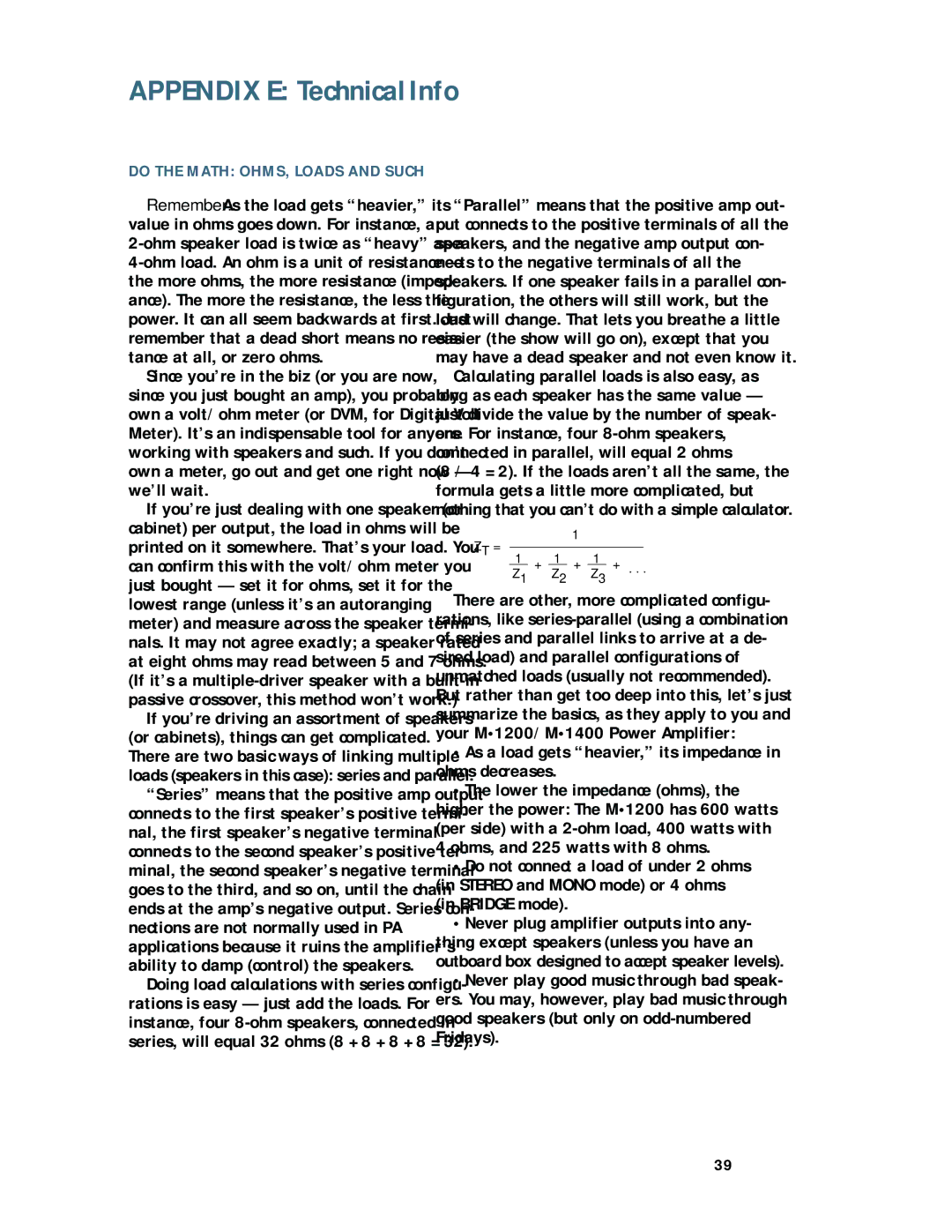M1200/M1400 specifications
The Mackie M1200 and M1400 are two prominent power amplifiers that have gained recognition for their reliability, performance, and innovative design in the professional audio field. Engineered for both live sound and studio applications, these amplifiers deliver exceptional sound quality and unmatched power, making them a favorite among audio professionals.One of the standout features of the M1200 and M1400 is their impressive power output. The M1200 boasts a power output of 1200 watts at 4 ohms, while the M1400 takes it a step further with 1400 watts at 4 ohms. This substantial power allows users to drive a wide range of speakers, making them suitable for various settings, from small clubs to large venues and outdoor events. Furthermore, they excel in providing clean, distortion-free sound even at high volumes.
Both models incorporate Mackie's patented Smart Protect DSP technology. This intelligent thermal and signal protection system helps prevent overheating and ensures that the amplifiers operate within safe limits, enhancing longevity and reliability. The DSP also contributes to superior sound quality, maintaining clarity and detail across different frequency ranges.
Another key feature of the M1200 and M1400 is their rugged construction. Designed for the rigors of touring and live performances, these amplifiers feature a sturdy chassis that withstands the challenges of transport and heavy use. Their efficient heatsink design allows for effective cooling, ensuring the amplifiers remain operational even under demanding conditions.
In terms of connectivity, both models are versatile. They offer XLR and TRS inputs, allowing compatibility with a variety of audio sources. The outputs include Neutrik Speakon connections, providing secure and reliable speaker connections. Additionally, the amplifiers have built-in limiters that help to prevent speaker damage by controlling signal levels.
The user-friendly interface of the M1200 and M1400 includes level control knobs, LED indicators for power and signal, and a comprehensive set of output options. This simplicity ensures that audio engineers can quickly adjust settings to cater to specific acoustic environments, making setup and operation seamless.
In conclusion, the Mackie M1200 and M1400 power amplifiers are remarkable for their powerful performance, durability, and advanced technology. Whether for live sound reinforcement or studio applications, these amplifiers continue to set a standard in audio excellence, proving their worth to sound engineers worldwide.
